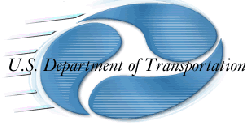Both Sides Also Tout Potential Savings To Customers
 On Monday, the European Community
and the United States signed an agreement intended to result in
better harmonized aviation safety systems on both sides of the
Atlantic and less cumbersome technical and administrative
procedures for the recognition of certificates. Both sides state
this will further improve safety levels and reduce costs for both
European and US manufacturers, while the savings should in turn be
reflected in cheaper fares for passengers.
On Monday, the European Community
and the United States signed an agreement intended to result in
better harmonized aviation safety systems on both sides of the
Atlantic and less cumbersome technical and administrative
procedures for the recognition of certificates. Both sides state
this will further improve safety levels and reduce costs for both
European and US manufacturers, while the savings should in turn be
reflected in cheaper fares for passengers.
"The agreement is a historical milestone not only because it is
the first aviation safety agreement the European Community has
concluded with a third country, but also because of its impact on
aviation safety on a global scale," said European Commission
Vice-President in charge of Transport, Antonio Tajani.
The EU and US already have among the best aviation safety
records in the world, with less than 0.6 accidents per million of
departures between 1996-2005. But that figure can be reduced
further.
The agreement specifically provides for joint participation in
the inspection of civil aviation authorities and undertakings, for
cooperation and assistance in any investigation or enforcement
proceeding and on the exchange of safety data, including data on
accidents and incidents. The agreement also foresees mutual
recognition of aviation safety certificates obtained through
shortened product approval procedures and mutual acceptance of
products tests. In turn, EU and US citizens will benefit from
harmonized safety systems, as well as faster and less costly
technical and administrative procedures for the recognition of
certificates.
Aviation is central to the macro-economic, social and political
relationship between the United States. and the EU: their markets
represent more than 50 percent of global aviation. The US and
European industry combined carry close to 1.5 billion passengers a
year; for cargo, the combined US and EU freighter fleet accounts
for over 70 percent of the world total.
 Furthermore, forecasts for the next
five years show a net increase following the success of the recent
first stage Open Skies Agreement: 25 millions extra passengers, 12
billions euros benefit and an extra 80,000 job in the US and
EU.
Furthermore, forecasts for the next
five years show a net increase following the success of the recent
first stage Open Skies Agreement: 25 millions extra passengers, 12
billions euros benefit and an extra 80,000 job in the US and
EU.
The manufacturers' organizations covered by this agreement are
the world leaders in the field. EU-US trade in aerospace products
is significant: last year the overall trade of aircrafts,
spacecraft and parts was worth more than $31 billion.
The economic returns for European Community and US manufacturers
represent millions of euros in annual savings thanks to shorter
product approval procedures and the mutual acceptance of product
tests. This will in turn facilitate exchanges and healthier
competition. Airlines will also benefit, since the agreement
provides for the use of each others approved repair and maintenance
facilities.
Furthermore, in October the European Community will pursue this
approach with Canada, thus boosting safety in the entire North
Atlantic area, through the cooperation of the world's three major
players in aviation and avionics manufacturing.
 Aero-News: Quote of the Day (04.28.25)
Aero-News: Quote of the Day (04.28.25) ANN's Daily Aero-Term (04.28.25): Decision Altitude (DA)
ANN's Daily Aero-Term (04.28.25): Decision Altitude (DA) ANN's Daily Aero-Linx (04.28.25)
ANN's Daily Aero-Linx (04.28.25) Airborne-Flight Training 04.24.25: GA Refocused, Seminole/Epic, WestJet v TFWP
Airborne-Flight Training 04.24.25: GA Refocused, Seminole/Epic, WestJet v TFWP Aero-News: Quote of the Day (04.29.25)
Aero-News: Quote of the Day (04.29.25)




